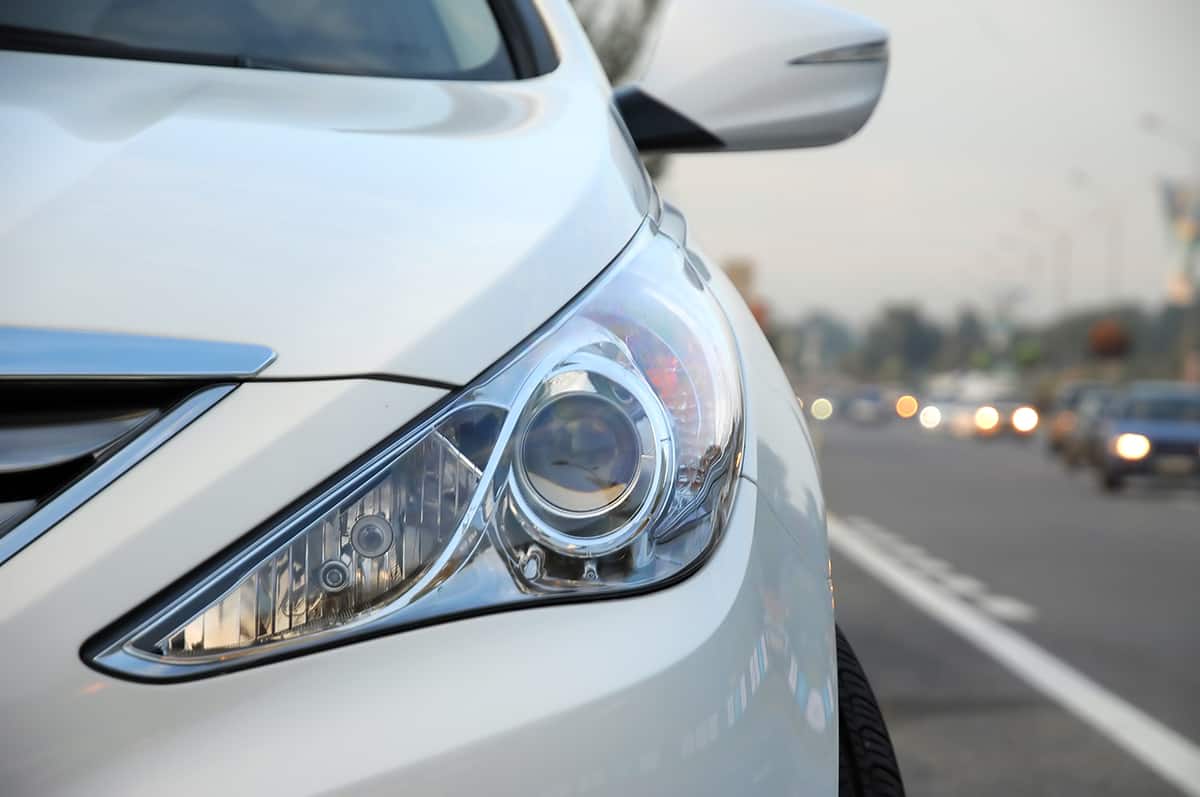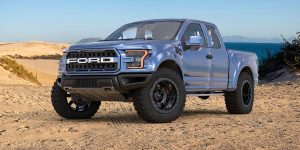The Hyundai Elantra is a small car that strikes a wonderful balance between speed, gas mileage, and price. The National Highway Traffic Safety Administration (NHTSA) and the Insurance Institute for Highway Safety (IIHS) have both given it high marks in recent years for its cutting-edge safety and technological features. However, that’s not to say all Hyundai Elantra model years are made equal.
The best model years for the Hyundai Elantra are 2015, 2017, 2018, 2019, and 2020. The worst years are 2010, 2011, 2012, 2013, and 2014. This is based on customer feedback, stats, reports, and reviews.
In this guide, I’ll explain how the Elantra has evolved over the generations, what the best and worst model years are, and whether or not it’s worth buying a new Hyundai Elantra today.
A Brief History of the Hyundai Elantra
Since its introduction in 1990, the Hyundai Elantra has been a popular compact car option. In some countries, the original Elantra was sold under the name “Lantra,” which it debuted under in 1991. Hyundai has consistently improved the Elantra over the years by reworking its exterior, including adding new features and engine options and revamping the Elantra’s interior.
The second generation of the Elantra was released by Hyundai in the year 2000. It was redesigned to be more aerodynamic and offered upgraded engines. Elantra introduced the Elantra GT hatchback model with this generation. The third-generation Elantra debuted in 2006 with a brand-new look, enhanced fuel efficiency, and advanced safety features.
The 2010 debut of the fourth generation saw a major redesign that gave the cars a classier appearance and more room inside. It also featured modern infotainment systems and a selection of powerful engines.
Hyundai Elantra Generations
1st Generation (1991 to 1994)
The original Hyundai Elantra was classified as a compact car. It was a straightforward design, and it had four doors like a regular sedan. It had a four-cylinder engine that dispensed 1.6 liters of displacement, which was sufficient for decent acceleration and decent gas mileage.
2nd Generation (1995 to 1999)
The compact car segment was expanded upon by the second-generation Hyundai Elantra, which included the Elantra, Sonata, and Veloster. For the first time, the Elantra lineup included both a 4-door sedan and a 5-door hatchback (the Elantra GT). It had a sleeker exterior and an enhanced interior and was lauded for its efficient performance and pleasant ride quality.
3rd Generation (2000 to 2005)
Third-generation Hyundai Elantras brought a more sophisticated look to the compact car segment. There was more space inside, and it got better gas mileage and had more security options. You could get either a manual or an automatic transmission in your car, and the engines were all four cylinders. It maintained its reputation for dependability, low cost, and a smooth ride. An Elantra Touring wagon model, available in select markets, debuted with this generation.
4th Generation (2006 to 2009)
The compact Hyundai Elantra underwent a major makeover for its fourth generation. It was more stylish overall, with a roomier cabin and multiple available powertrains. Its safety and entertainment systems were both cutting-edge. It was a pleasant vehicle to ride in, economical, and reasonably priced. The current generation is lauded for its smooth driving and attractive exterior. The Elantra GT and Elantra Touring were also still available.
5th Generation (2010 to 2014)
This generation had a more aerodynamic exterior design and a roomier, better-equipped cabin than its predecessors. It has state-of-the-art safety features, provides a smooth ride, and saves money at the pump. It comes in a variety of trim levels, and you can choose from a number of different engines, including a turbocharged one. It has been updated with then-cutting-edge features, and it was already widely regarded as one of the best in its class due to its excellent value and feature set.
6th Generation (2015 to 2019)
The sixth-generation Hyundai Elantra features a sportier and more aggressive design with a focus on technology, comfort, and efficiency. It comes with more advanced safety features, a larger touchscreen display, and improved fuel efficiency. The car offers a choice of two engines, a 2.0L 4-cylinder or a 1.6L Turbo 4-cylinder. The new Elantra also comes in several trims, providing a range of features and options for buyers to choose from.
7th Generation (2020 to Present)
One of Elantra’s defining characteristics is its continuous design upgrades over the years. The Elantra’s refined exterior design makes it look better than ever. There are four different trim levels available, so you can find the perfect car. The high-powered drive provides increased performance and a quiet ride thanks to its 147 horsepower. Most engine failure issues that plagued earlier generations of the Elantra have been resolved in the latest generation.
Best and Worst Years for Hyundai Elantra
Best Years
2015
The sedan and hatchback body styles of the 2015 Hyundai Elantra are both excellent choices for a compact car. Although high-quality materials are used throughout, adults may find the back seat uncomfortable. The Elantra’s base engine is weak, but the car handles well.
2017
When compared to other vehicles in its class, the 2017 Hyundai Elantra places in the upper half. The Elantra, which comes as either a sedan or hatchback, is highly recommended due to its practical design, high quality of construction, and high predicted reliability scores.
2018
When it comes to compact cars, the 2018 Hyundai Elantra places roughly in the middle of its class. It gets good gas mileage, has a lot of bells and whistles, and has acceptable storage space, but it falls short of some of its competitors in terms of style and performance.
2019
The 2019 Elantra is a quality subcompact option. It has a decent amount of interior space for the class and an intuitive infotainment system. This Hyundai provides a pleasant driving experience and has a slightly better-than-average predicted reliability rating. However, it has an underwhelming lineup of engines and a less luxurious interior than some of its competitors.
2020
Some adjustments were made to the Elantra’s engine for 2020. In the sedan market, the manual transmission was phased out as manufacturers shifted to offering only vehicles with CVTs as the sole transmission option. Additional standard driver assistance features have been added to the 2020 Elantra. These include forward collision warning and automatic emergency braking.
Worst Years
2010
When compared to other Hyundai Elantra models, this one is probably the worst. There were a wide variety of problems that owners reported, from broken engines to faulty transmissions. The steering, the paint, and the brakes all came up as sources of customer frustration.
2011
Customers reported multiple problems, including those that could endanger their safety, such as stalling and overheating. Problems with the suspension, the interior, and the exterior paint, as well as the engine and transmission, are the primary causes of alarm. Even though the company has made upgrades, consumers should still exercise caution before purchasing this model.
2012
Customers of the 2012 Hyundai Elantra spent a lot on maintenance and roadside assistance. The car suddenly stopped because of electrical issues. The brakes would also fail suddenly at inopportune times. Customers had to deal with oil leaks that eventually ruined engines. This design is widely regarded as one of the worst that has ever been made available to the public.
2013
Customers have reported major problems with the 2013 Hyundai Elantra, the most common of which is early engine and transmission replacements. The fuel system has also been impacted by these. Problems with the brakes, the wheels, and the hubs were also mentioned.
2014
Hyundai made an effort to stay current with software systems and advances in automotive technology, but the company occasionally required assistance with individual features. Many electrical components in the 2014 Hyundai Elantra failed, which caused serious issues with the vehicle’s steering, suspension, and brakes.
Is It Worth Buying a Brand-New Hyundai Elantra?
When it comes to compact cars, the 2023 Hyundai Elantra is an excellent option. The Elantra is easy to handle even on broken pavement, and it handles corners with surprising dexterity, especially in the N and N Line trims. Each of the three available engines propels the Elantra with assurance. The interior of this sedan is well-designed, with a large touch screen, plenty of standard safety equipment, comfortable front seats, and acceptable legroom in the back.
The Elantra is a great option among new cars because it combines affordability and luxury. And to be fair, many of its competitors are excellent as well, from the Honda Civic to the Toyota Corolla. If you’re going to buy, you might as well check out all four of them first.
Most Common Problems with the Hyundai Elantra
There have been reports of problems with a dual-clutch or continuously variable transmission. At or before 100,000 miles, these are the most expensive problems that could occur. Putting your foot on the brake pedal comes at a price. The CVT has issues and is probably not going to be fixed, which could mean replacing the transmission if/when necessary.
There is a problem with the engine sensors in the new Elantra, just like there has been for years in Korean cars. The sensors will fail, and you’ll have to keep spending money on the car’s engine.
Malfunctioning airbags: In the previous generation of the Elantra, the Airbag warning light would frequently come on for no apparent reason. As a result, there have been a number of recalls on certain models.
In addition, the paint doesn’t hold up over time, which is to be expected given that these automobiles are considered “affordable.” Occasional flaking means you’ll have to pay to have the body repainted to prevent rust.
Numerous Elantra drivers have griped about the rapid deterioration of their vehicle’s interior plastic quality after 20,000 miles. However, this problem has been fixed in the newest Elantra models. To add insult to injury, the new generation has only been around for a short period of time, and we have no idea what kind of problems they may cause in the future.






